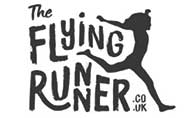Menu
I always make this is one of the key themes to address at a Flying Coach visit. There’s, in my view, less need to go into the science beyond some very basic reminders – this is all available in countless media and given the expertise of the sports scientists who have worked on this, and who have helpfully spread their wisdom in the endurance coaching world, it’s not something I have any fresh insights into. The sort of things I raise on pacing strategy are these:-
· Round Numbers? – these are great when they are sensible, just random numbers when they aren’t sensible. I simplify to make the point, but for every marathoner between 3.01 and 3.29, the next realistic goal shouldn’t be 2.59. I have numerous conversations with runners where I suggest that 3.03 (or it could be 2.48 or 3.35) would be a tremendous result based on all training and racing to date and if they try to go for a 2.59 (or a 2.44 or a 3.29) not only will thy not get this slightly out of reach goal, they will end up with a slower result that doesn’t do them justice.
· What your mates tell you? Men are particularly vulnerable to this, and a beer or two can be highly persuasive. There are worse things that people do because of peer group pressure but be clear and decisive on what makes sense for where you are at.
· Half Marathon x 106/107% - For most people quicker than about 3.25 who have prepared well for a marathon, this is typically where I expect them to focus on pacing. It works at really elite level and it works at modest club level. Past about 3.30 it drifts as fewer runners have built up the running volume/longevity to make this conversion. There are a small number of outliers who ‘beat the stats’ and particularly at elite level (check Paula Radcliffe and Dan Robinson). My theory, and I have discussed this in detail with Dan R, is that some combination of genetic ‘skill’ at fat burning; an unquantifiable mental toughness; and simply the ideal set of circumstances when they did their best marathon were never quite matched in any halves they did. But don’t all think you can do a Paula or Dan
· 2 x Half Marathon +[ x] minutes - Not so keen on this for the wide range of runners as x drifts as the level drifts. A 63 minute half marathon runner would be hacked off if x was 10 minutes; a 90 minute runner would be ecstatic if x was 10 minutes - and it almost never is
· (5 x 10k) – 10 minutes – this actually is a useful guideline (but no more than that) provided you have done the suitable marathon prep and it works from close to 2 hour level to slightly sub 4.00 level, and whilst you can ‘beat’ the number by 2 or 3 minutes, you won’t get much better than that assuming of course that your 10k PB is current and done on decent surface in good weather. The numbers tend to become more precise as the level gets higher
·
Subject to course/weather/pacing – usually you will know the marathon course in detail. What you won’t know is the weather and you have to factor this in. Some rain, some slight chilliness, light breezes – these are all fairly negligible. But if the temperature when you are actually racing is heading towards 19 celcius or more (and that’s a shade temperature, so you may exposed to something higher) you have to be sensible. The elites do this; I have sat several times at the elite athletes briefing at the Berlin Marathon. It’s held at noon the day before the race, and they have clear data on temperature; humidity; and wind speed and direction. Often this is just perfect – the various World Records show what is possible there. But when it’s a tad too warm, the elites, whatever they have stated at the press conference two or three days earlier, will rein in their target pace by a minute or two
· Have a hierarchy of goals from ‘ultimate’ to ‘acceptable’ – This helps when you are out on the road deep into the race and it’s starting to hurt - if 2.59.59 is your highest hope on the day, then whatever the frustration and bittersweet feeling it may generate, 3.00 or 3.01 is incredibly close to that, so keep pushing for whatever you can get on the day; you’ll be even more annoyed with hindsight if you don’t. As a coach, a 2.59 and 3.01 performance are physically almost identical performances, and ditto when you look on the margins of 2.45; 3.30 etc. Personally I suggest 2 or 3 minutes shy of the best goal is very good running on the day; if you are more than 5 or 6 minutes out, then it’s been a tad disappointing.
The above points may all sound very cautious and conservative and for the majority of marathoners that’s the usual trend but there are also a significant minority who can benefit from a bit of a nudge. Often these are the people who are desperate to get sub 3.00, 3.15 or whatever, and I’m convinced that whilst 2.59.59 or 3.14.59 would indeed be a solid result at that stage, there’s more in the tank and they can aim maybe 2 or 3 minutes faster. Just as there has to be a load of people running 3.03 and 3.33, so there has to be a pool who pile in at 2.56 or 3.26.
I’ve deliberately not yet mentioned those conversion tables. Some of them seem very sensible though there are some that give incredibly ‘tight’ conversions (there’s one which offer a 2.46 marathon for an 80 minute half, come on) which I doubt that the coaches who have compiled the data ever achieve with people they coach. What they don’t do is anything that relates to a given runner at a given stage of training and racing.

